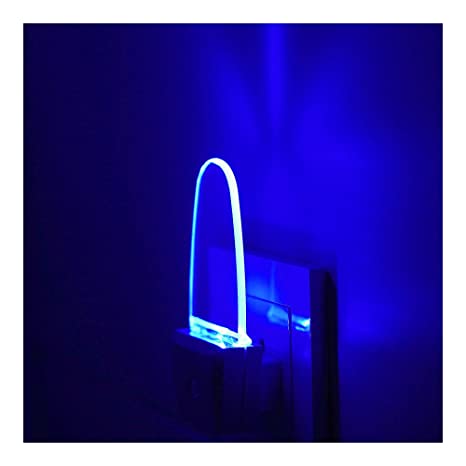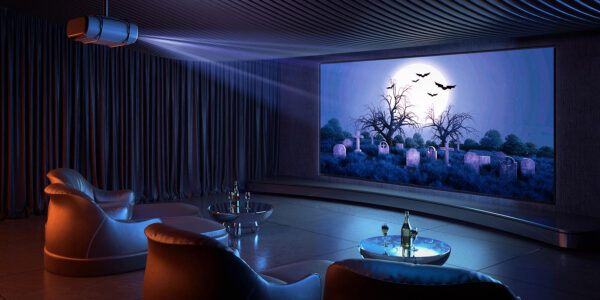The energy efficiency of LED lighting is often cited as the primary motivating factor for switching from incandescent or other traditional lighting sources. However there are several other important LED Lighting benefits beyond energy efficiency. Traditional light sources dissipate up to 80% of their energy input as heat, with only 20% of that input converted to light, a huge loss of valuable energy. Even early-generation LED lighting systems will reverse these numbers, with 80% of energy input being converted to light and 20% being dissipated as heat. In practical terms, for every $100 you spend to light a space, you are losing $80 as heat with incandescent lighting, but only $20 or less with LED lighting.
The Many LED Lighting Benefits Beyond Energy Efficiency
Less heat production also makes LED systems safer in that the excess heat poses a far lower risk of burn injuries to technicians who work with lighting systems and reduces risk of fire.
That said, field tests and anecdotal reports reveal that the benefits of LED lighting go well beyond energy efficiency and safety. Sites that have converted to LED lighting report at least five significant benefits in addition to increased efficiency:
-
-
Long Lifespan:
LED lights have an exceptionally long lifespan compared to traditional lighting technologies. While incandescent bulbs may last for around 1,000 hours and compact fluorescent lamps (CFLs) for about 8,000 hours, LED lights can last up to 50,000 hours or more. This longevity not only reduces maintenance and replacement costs but also minimizes waste generation. With LED lights, you can enjoy years of reliable and efficient illumination without frequent bulb changes. -
Durability and Resilience:
LED lights are built to withstand demanding conditions. They are highly durable and resistant to shocks, vibrations, extreme temperatures, and moisture. LED lighting fixtures are designed with robust materials and solid-state construction, making them more resistant to physical damage compared to fragile incandescent or fluorescent bulbs. LED lights are ideal for both indoor and outdoor applications, including areas prone to impact, vibrations, or harsh weather conditions. -
Instant-On Capability:
LED lights provide instant illumination without any warm-up time. Unlike traditional lighting technologies that require time to reach their full brightness, LED lights switch on instantly at their full potential. This instant-on capability is particularly advantageous in environments where immediate illumination is critical, such as security lighting, emergency lighting, or motion-activated fixtures. LED lights ensure prompt visibility, enhancing safety and security. -
Design Flexibility:
LED technology offers unmatched design flexibility, enabling innovative and customizable lighting solutions. LEDs come in various shapes, sizes, and color temperatures, allowing for creative and tailored lighting designs. LED strips, modules, and fixtures can be easily integrated into architectural elements, furniture, or signage, providing versatility and enhancing aesthetics. LED lights also offer a wide range of color options, making them ideal for decorative lighting and creating ambiance in different settings. -
Enhanced Safety:
LED lights emit significantly less heat compared to traditional lighting sources. Incandescent bulbs and halogen lamps release a substantial amount of heat, posing fire risks and increasing the temperature in confined spaces. LED lights remain cool to the touch, reducing the risk of burns and accidental fires. This makes them safer for use in various applications, including lighting fixtures in close proximity to flammable materials or in areas where heat-sensitive objects are present. -
Dimming and Control Capabilities:
LED lights are highly compatible with dimming and control systems, allowing for precise and dynamic illumination control. Unlike traditional lighting technologies, LEDs can be easily dimmed without compromising their performance or lifespan. This flexibility in dimming and control enables energy conservation, mood setting, and customization of lighting levels according to specific needs. LED lights can be integrated into smart lighting systems, offering remote control, scheduling, and automation features for enhanced convenience and energy management. -
Eco-Friendly Lighting:
LED lights are environmentally friendly on multiple fronts. Apart from their energy efficiency, LED lights do not contain hazardous substances like mercury, which is present in fluorescent lamps. This eliminates the need for special disposal procedures and reduces the environmental impact. LED lights are also recyclable, further contributing to sustainable waste management practices.
-
These and other LED Lighting benefits beyond energy efficiency will continue to make specification grade LED the lighting option of choice for commercial, manufacturing, and outdoor applications. LED lighting engineers are making breakthroughs every day on light disbursement, on-off switching, thermal management, and color direction.
Human Benefits of LED Lighting
Lighting plays a crucial role in shaping our mood, well-being, and overall health. Traditional lighting technologies often fall short in creating an optimal lighting environment. However, LED (Light Emitting Diode) lighting has emerged as a game-changer, offering numerous benefits that positively impact human mood and health. Let’s explore how LED lighting can enhance our daily lives without sacrificing aesthetics or energy efficiency.
- Natural-Like Lighting:
LED lights can mimic the natural daylight spectrum, providing a more balanced and pleasant lighting experience. By offering a range of color temperatures, from warm white to cool white, LED lights can create an environment that closely resembles natural light. This natural-like lighting has been shown to improve alertness, focus, and productivity during the day while promoting relaxation and better sleep at night.
- Circadian Rhythm Regulation:
LED lights can be designed to support our body’s natural circadian rhythm, the internal biological clock that regulates sleep-wake cycles. LED lights with tunable white technology can adjust their color temperature throughout the day, aligning with the changing intensity and color temperature of natural sunlight. This synchronization promotes a healthy sleep-wake cycle, improves mood regulation, and enhances overall well-being.
- Reduced Flicker and Glare:
LED lights have significantly reduced flicker compared to traditional lighting technologies. Flickering lights can cause eye strain, fatigue, and headaches, negatively affecting our mood and productivity. LED lights provide stable and flicker-free illumination, minimizing eye discomfort and promoting a more comfortable visual experience. Additionally, LED lights can be designed with proper diffusers and optics to reduce glare, improving visual comfort and reducing the risk of glare-related eye fatigue.
- Improved Color Rendering:
LED lights offer excellent color rendering capabilities, accurately representing colors as they appear in natural light. This is especially important in settings where color perception is critical, such as art galleries, retail spaces, and healthcare facilities. By enhancing color rendering, LED lights create a vibrant and visually appealing environment, positively influencing our mood and enhancing our perception of the surrounding space.
- Personalization and Lighting Control:
LED lighting allows for personalized lighting experiences and control options. With the integration of smart lighting systems, LED lights can be adjusted and customized to meet individual preferences and specific lighting needs. Dimming capabilities, color-changing options, and programmable lighting scenes provide flexibility in creating the desired ambiance, supporting relaxation, concentration, or productivity as desired.
- Energy Efficiency and Sustainability:
LED lighting not only benefits our mood and health but also contributes to energy efficiency and sustainability. LED lights consume significantly less energy compared to traditional lighting technologies, reducing electricity usage and associated costs. With longer lifespans and reduced maintenance requirements, LED lights minimize waste generation and the environmental impact of lighting systems. By embracing LED lighting, we can create a healthier and more sustainable future for both ourselves and the planet.
LED lighting has revolutionized the way we illuminate our spaces, providing benefits beyond energy efficiency. With their ability to mimic natural light, support circadian rhythm, reduce flicker and glare, improve color rendering, offer lighting control options, and promote energy efficiency, LED lights positively impact human mood and health. By choosing LED lighting solutions, we can create environments that promote well-being, enhance productivity, and foster a healthier and more visually comfortable lifestyle.
LED lights are more than just a passing trend; they are the future of lighting. With their energy efficiency, technological advancements, cost-effectiveness, improved lighting quality, integration with smart technology, versatility, and design flexibility, LED lights are poised to dominate the lighting industry for years to come. As we continue to prioritize sustainability, embrace technological advancements, and seek efficient lighting solutions, LED lights will lead the way, illuminating our world with brilliance and paving the path to a brighter and greener future.







